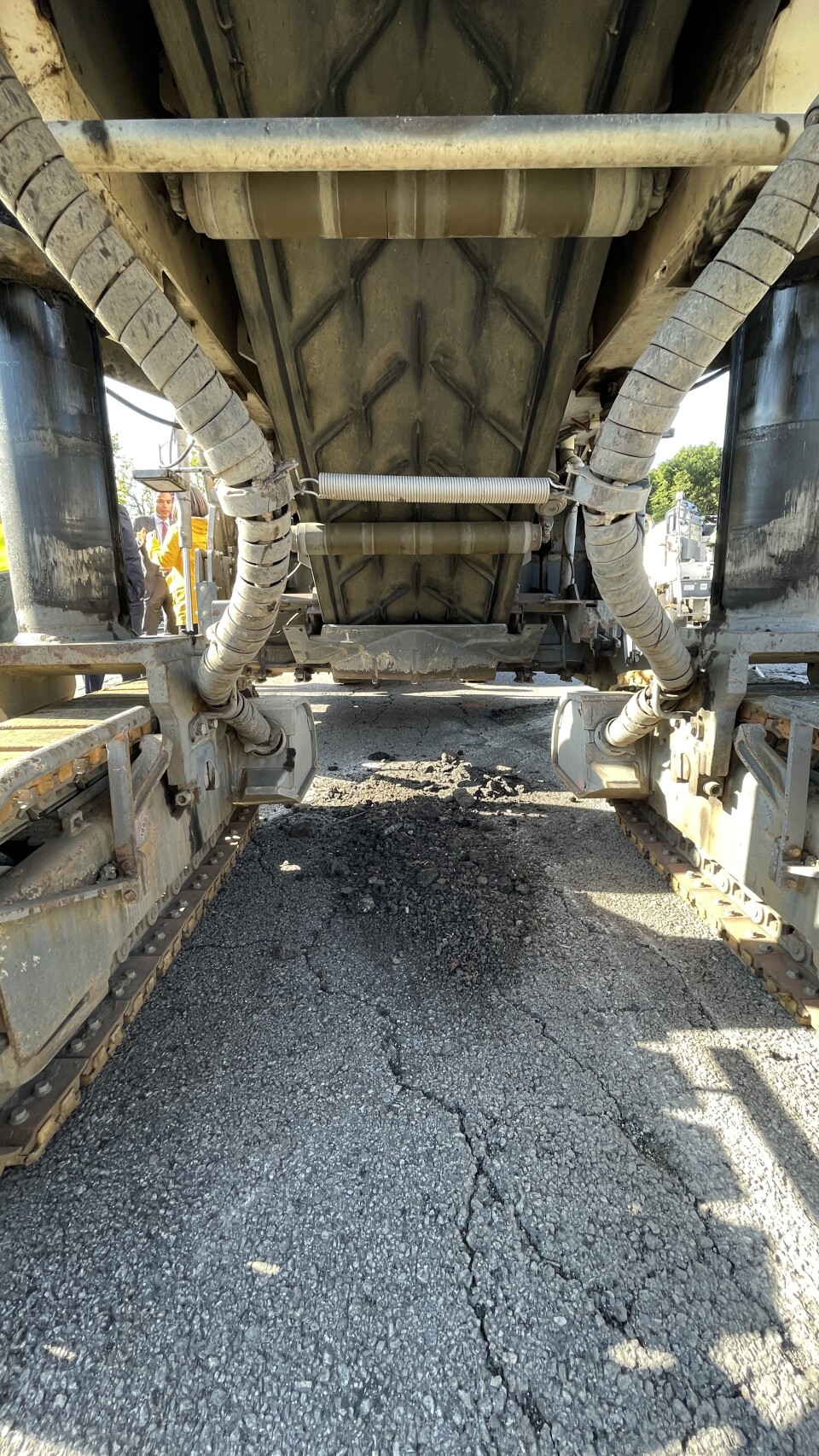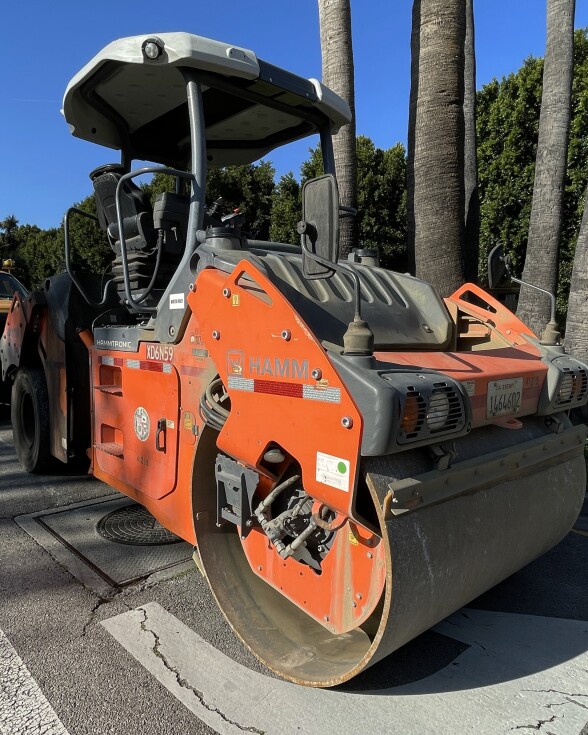Truth matters. Community matters. Your support makes both possible. LAist is one of the few places where news remains independent and free from political and corporate influence. Stand up for truth and for LAist. Make your year-end tax-deductible gift now.
LA’s Overwhelmed By Potholes. Why The Wait To Get Them Fixed Might Be Long

With great rain comes great destruction of asphalt.
That was the message at a news conference held by Los Angeles Mayor Karen Bass on Thursday morning in the Mission Hills neighborhood of the San Fernando Valley.
“Each one of these storms has brought us the water we desperately need, but it’s also left behind damaged potholes, roads all across the city,” said Bass.
Why repairs are all hands on deck
Standing in front of an array of street fixing machines that would send a toddler into a frenzy, Bass and other city representatives talked about how L.A.’s 6,000 miles of roads have become a pock-marked mess, and that it’s so bad that those responsible for fixing them are completely overwhelmed.
“Last year in March we received about 1,100 pothole requests. This year in March we received about 7,000,” said Craig Shaw with L.A.’s Bureau of Street Services.
“Right now it’s all hands on deck.”
Since the end of December, Street Services has completed 17,000 of the 19,642 pothole requests it’s received, according to the department.
Wait times for a pothole fix have stretched from 1-3 days to 7-10. Street Services is pulling in workers from across divisions, like those that fix concrete sidewalks. As such, other infrastructure fixes could be delayed.
The pothole lifecycle
Potholes tend to start as some kind of crack in the street.
When it rains, water percolates deep down into the asphalt, and begins washing away the sub base, weakening the road. Then, heavy cars, busses and trucks come along and break it down even further, creating bigger and bigger holes.


Street services then come along, grind the road down, fill it with asphalt and crunch everything real tight, all with big machines.
Have you suffered pothole damage?
The city of L.A. might give you money to help with repairs.
My colleague Caitlin Hernández has put together a comprehensive guide to getting help
And you can also visit the city clerk's website to apply for assistance.










